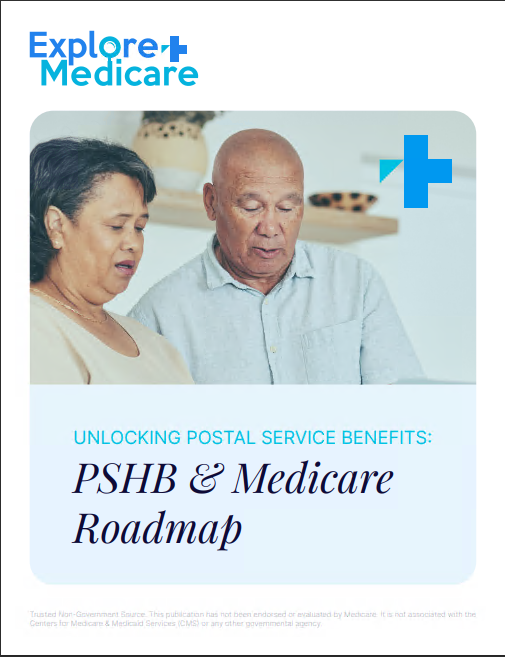Key Takeaways
-
Medicare Advantage plans in 2025 come with some notable changes, including stricter cost-sharing structures and shifts in supplemental benefit availability. Understanding these updates can help you avoid costly surprises.
-
While some new features appear attractive at first glance, it’s essential to evaluate plan details carefully. Benefits like capped drug costs and added services may come with tradeoffs elsewhere in coverage.
What’s Changing for Medicare Advantage in 2025?
If you’re enrolled in or considering a Medicare Advantage plan this year, you should be aware that 2025 brings in several rule changes and structural updates that could directly impact your healthcare experience and costs. Some changes are driven by federal policy adjustments, while others are responses from private plans adjusting their offerings within new regulations.
Here’s what you need to watch for before selecting a plan during the next enrollment window.
1. Prescription Drug Costs Are Now Capped—But Only Up to a Point
In 2025, one of the most anticipated changes is the implementation of a $2,000 annual out-of-pocket cap for prescription drugs under Medicare Part D. This is part of a broader Medicare reform aimed at reducing medication-related financial stress.
However, while the cap helps many enrollees, you should know:
-
The cap applies only to covered drugs under your plan’s formulary.
-
You must still meet the deductible (up to $590 in 2025) before the cap begins to protect you.
-
Specialty tier drugs may still involve high cost-sharing until you reach that $2,000 limit.
So while this change offers welcome protection, it doesn’t eliminate the need to compare how each plan handles formularies, step therapy, and drug tiers.
2. Fewer Plans Offer Extras Like OTC, Meals, and Transportation
In 2024, many Medicare Advantage plans promoted extra supplemental benefits such as over-the-counter (OTC) allowances, transportation services, and meal deliveries. In 2025, fewer plans are offering these benefits, and when they do, they often come with:
-
Narrower eligibility requirements
-
Stricter usage limitations
-
Less generous dollar allowances
The percentage of plans offering transportation has dropped to 30%, and OTC coverage has decreased from 85% to 73%. If you’re relying on such services, you must double-check whether your preferred plan still includes them.
3. Plans Are Shifting Toward Narrower Provider Networks
Another significant trend in 2025 is the tightening of provider networks. This includes:
-
Fewer in-network hospitals and specialists
-
Requirement of prior authorizations for more services
-
Limited geographic reach, especially in rural regions
This means access to care could be more restricted than it was in previous years. Always verify if your doctors and specialists are still in-network under any new plan you’re considering.
4. Out-of-Pocket Maximums Remain High for Some Plans
Even though drug costs are now capped, overall medical costs in Medicare Advantage can still climb high. In 2025:
-
The maximum out-of-pocket limit for in-network services can go as high as $9,350.
-
For combined in-network and out-of-network care, the cap can reach $14,000.
If you anticipate major surgeries, hospital stays, or chronic care management, a plan with a lower MOOP (maximum out-of-pocket) may be a better choice even if its monthly premium is higher.
5. Star Ratings May Not Reflect Recent Service Quality
The Medicare Star Rating system still evaluates plans on a scale from 1 to 5 stars, but keep in mind:
-
2025 plan ratings are largely based on 2023 and early 2024 data.
-
Plans that performed well last year might not have maintained the same level of service.
-
Supplemental benefits and member satisfaction changes may not be immediately reflected.
It’s important to not rely solely on Star Ratings when evaluating plan performance. Instead, review the Annual Notice of Change (ANOC) and Evidence of Coverage (EOC) documents.
6. Mid-Year Notifications of Unused Benefits Are Now Mandatory
A new policy in 2025 requires plans to send you a mid-year notice (between June 30 and July 31) detailing any supplemental benefits you haven’t yet used. While this helps ensure you take full advantage of what’s included, it can also:
-
Create a false sense of value if the benefits are difficult to access
-
Highlight benefits that sound good but are impractical for your situation
Use the notification as a reminder to assess your plan’s usefulness rather than as confirmation it’s a good fit.
7. More Plans Are Offering Premium Givebacks—But With Strings Attached
While you won’t see exact figures mentioned here, be cautious about offers that reduce your Part B premium. Many of these plans include:
-
Smaller networks
-
Fewer or less generous supplemental benefits
-
Higher copayments or deductibles in other areas
A lower premium doesn’t necessarily mean better value. Be sure to weigh all the costs, including coinsurance and copayments, when reviewing any plan offering a Part B giveback.
8. Chronic Condition and Dual-Eligible Special Needs Plans Are Expanding
In 2025, there’s a noticeable increase in Special Needs Plans (SNPs), especially those designed for:
-
Individuals with chronic conditions (C-SNPs)
-
People eligible for both Medicare and Medicaid (D-SNPs)
These plans can offer more tailored care and focused benefit structures, but:
-
You must qualify based on medical or financial criteria.
-
The benefits vary significantly between regions.
-
Not all providers accept these plans.
If you qualify, these could be valuable options, but eligibility and network restrictions should be carefully examined.
9. Supplemental Dental, Vision, and Hearing Coverage May Have Hidden Limits
Many Medicare Advantage plans continue to advertise coverage for dental, vision, and hearing in 2025, but you should be cautious:
-
Annual limits for dental may be low and exclude major services
-
Vision coverage might only include basic exams or glasses with limited frame options
-
Hearing aid benefits often come with maximum reimbursement amounts
Don’t assume these are comprehensive just because they’re included. Always look at the actual coverage limits and restrictions.
10. Telehealth Services Remain Popular, But Coverage Varies
Following the surge in telehealth usage during the pandemic, most Advantage plans continue to offer virtual care in 2025. However, differences still exist:
-
Some plans only cover telehealth with specific in-network providers
-
Others limit virtual visits to certain conditions or specialties
-
Cost-sharing may differ from in-person visits
If telehealth is important to you, confirm the type of services covered and any cost differences.
Evaluate Plans Based on Your 2025 Healthcare Needs
Choosing the right Medicare Advantage plan in 2025 means more than just reviewing the perks. It requires a thoughtful evaluation of how each plan aligns with your anticipated medical needs, lifestyle preferences, and financial limits.
Take time to:
-
Review the plan’s provider directory
-
Compare formularies and drug coverage tiers
-
Examine cost-sharing obligations
-
Read the ANOC and EOC thoroughly
Every plan has its strengths and weaknesses. Your goal should be to match those features with what you actually need—not just what looks good on paper.
A More Informed Decision Starts with the Right Help
As Medicare Advantage evolves, staying informed can protect you from unexpected costs and coverage gaps. These 2025 changes reflect ongoing shifts in healthcare policy and market dynamics, making it even more critical to approach plan selection with caution.
Before making your decision, speak with a licensed agent listed on this website. They can help clarify plan details, explain any tradeoffs, and ensure you’re getting the most appropriate coverage for your unique situation.









